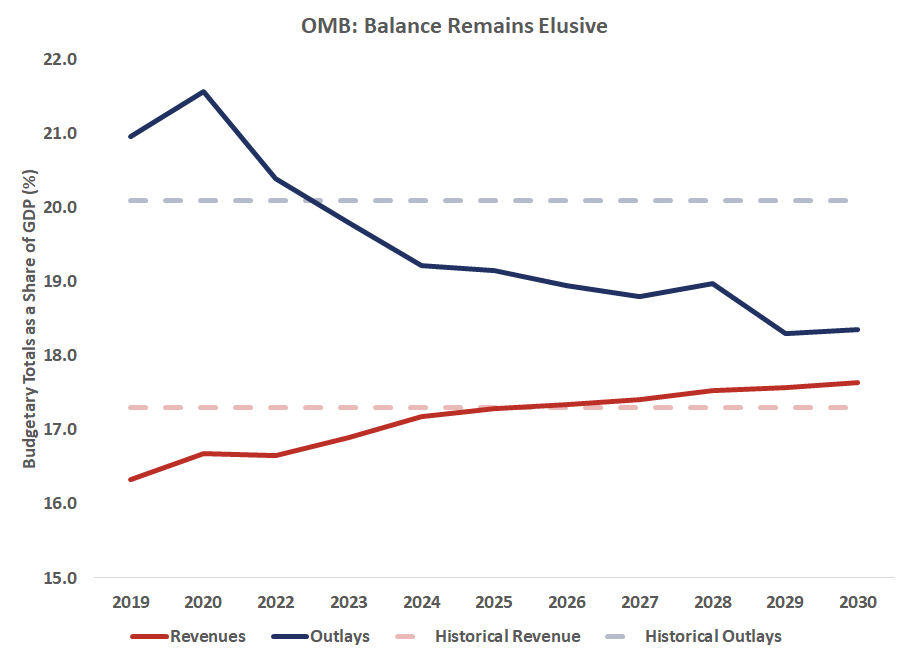Insight
February 10, 2020
Highlights of FY2021 President’s Budget
By the Numbers
Taxes: Compared to its own baseline, the President’s Budget makes essentially no changes in revenues. The Office of Management and Budget’s (OMB) baseline, however, assumes $2.9 trillion more in revenue collection than does the Congressional Budget Office (CBO). Revenues in the President’s Budget are projected to increase as a share of gross domestic product (GDP), from well below the 50-year average of 17.3 percent to slightly above average.
Spending: By the end of the budget window, the President’s Budget would decrease spending by over $4.3 trillion over the next 10 years, sending spending over 1.7 percentage points below historic norms by 2030.
Deficits: The President’s Budget assumes projected deficits decline substantially from 4.9 percent of GDP to 0.7 percent of GDP, based upon the OMB’s own assumptions, through a combination of significant spending reductions, optimistic assumed economic growth, and savings on debt service.
Interest Payments: Interest payments on the debt will reach $665 billion in 2030. This sum is more than double the $263 billion in debt service costs during 2017, the year President Trump assumed office.
Debt Held by the Public: Borrowing from the public would increase as a share of the economy under the President’s Budget, reaching 81.0 percent of GDP in 2022 before dropping to 66.1 percent of GDP – which would be the lowest level of debt outstanding since FY2011.
Economic Projections
The President’s Budget includes substantially more optimistic economic projections than does CBO in terms of real GDP growth and unemployment. Under the President’s Budget, real GDP is assumed to grow about 1.2 percentage points faster than in CBO’s projection. These effects combine to increase tax revenues and reduce debt service. Indeed, persistent, higher growth of just 0.1 percentage points should lead to $306 billion in deficit reduction.












